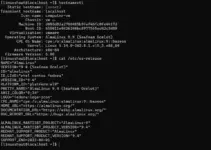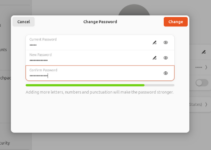To handle a mouse wheel event in Angular, you can use the @HostListener decorator to attach an event listener to the host element of the component. Here is an example:
import { Component, HostListener } from '@angular/core';
@Component({
selector: 'app-table',
templateUrl: './table.component.html',
styleUrls: ['./table.component.css']
})
export class TableComponent {
@HostListener('wheel', ['$event'])
onMouseWheel(event: WheelEvent) {
// do something with the mouse wheel event
}
}In this example, the onMouseWheel method will be called whenever the user scrolls the mouse wheel while the cursor is over the host element of the TableComponent. The $event object that is passed to the method contains information about the wheel event, such as the wheel delta and the coordinates of the event.
You can use this event to implement scrolling behavior for your table, such as scrolling the table body horizontally or vertically when the user scrolls the mouse wheel.
import { Component, HostListener, ViewChild } from '@angular/core';
import { ElementRef } from '@angular/core';
@Component({
selector: 'app-table',
templateUrl: './table.component.html',
styleUrls: ['./table.component.css']
})
export class TableComponent {
@ViewChild('tableBody') tableBody: ElementRef;
@HostListener('wheel', ['$event'])
onMouseWheel(event: WheelEvent) {
const delta = Math.sign(event.deltaY);
this.tableBody.nativeElement.scrollLeft += delta * 50;
}
}
In this example, the onMouseWheel method scrolls the table body horizontally by a fixed amount (50 pixels) whenever the user scrolls the mouse wheel. The @ViewChild decorator is used to accessing the tableBody element, which is assumed to be a child element of the component template with the #tableBody template reference variable.
How to test a directive with a mouse wheel event in angular
To test a directive with a mouse wheel event in Angular, you can use the TestBed.triggerEventHandler() method to simulate the event. The TestBed.triggerEventHandler() method is part of the Angular Testing API and allows you to trigger an event on a DOM element in a unit test.
Here is an example of how you can use the TestBed.triggerEventHandler() method to test a directive with a mouse wheel event:
import { TestBed } from '@angular/core/testing';
import { By } from '@angular/platform-browser';
describe('MyDirective', () => {
let component: MyComponent;
let fixture: ComponentFixture<MyComponent>;
let el: DebugElement;
beforeEach(() => {
TestBed.configureTestingModule({
declarations: [MyComponent, MyDirective]
});
fixture = TestBed.createComponent(MyComponent);
component = fixture.componentInstance;
el = fixture.debugElement.query(By.directive(MyDirective));
});
it('should handle the mouse wheel event', () => {
spyOn(component, 'onMouseWheel');
TestBed.triggerEventHandler(el, 'wheel', { deltaY: 1 });
expect(component.onMouseWheel).toHaveBeenCalled();
});
});
In this example, the TestBed.triggerEventHandler() method is used to trigger a wheel event on the element that is matched by the MyDirective directive. The event object passed to the method simulates a mouse wheel event with a positive deltaY value (indicating that the wheel was scrolled down).
The test then verifies that the onMouseWheel method of the MyComponent component was called in response to the event. This is done by using the spyOn() method to create a spy on the onMouseWheel method and then checking that the spy was called with the toHaveBeenCalled() matcher.





